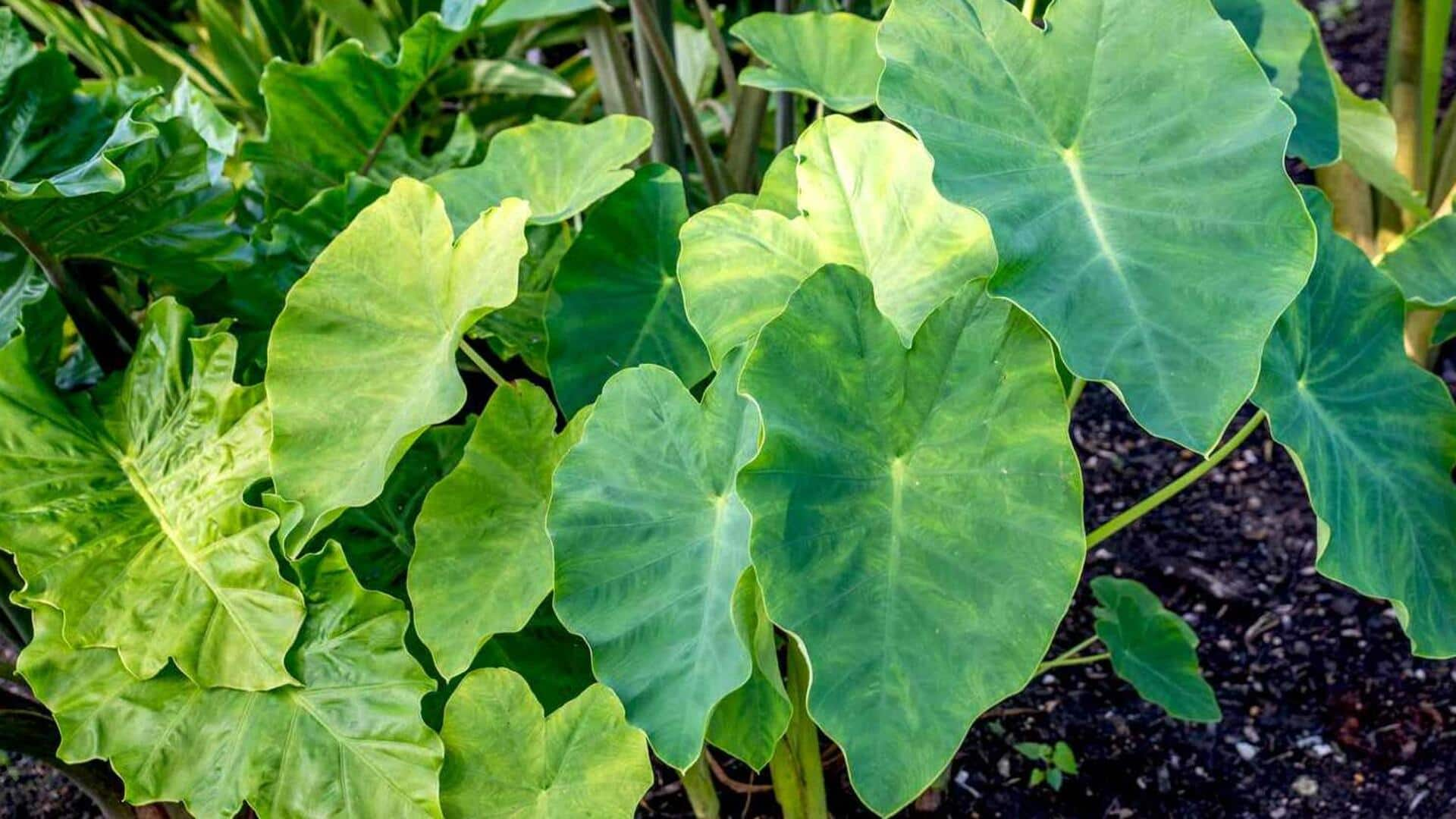
Elevating elephant ears plant: Size maximizing tips
What's the story
Elephant ears, with their giant, heart-shaped leaves, can turn even the most modest garden into a tropical oasis. But to get them to grow big and stay healthy, you need to know what these plants really want. Here are five crucial tips to make sure your elephant ears reach their maximum size.
Variety Choice
Select the right variety
Not all elephant ears are created equal when it comes to reaching sky-high sizes or unfurling giant leaves. If you're after the supersized look, you can't go wrong with varieties like Colocasia gigantea or Alocasia macrorrhizos. These species are the true giants of the elephant ear world, with the genetic potential to reach staggering sizes when given the right care.
Hydration needs
Provide ample water
Elephant ears love moisture! They need to be watered regularly to grow big and healthy. During hot and dry spells, you'll want to water them even more to keep the soil nice and damp. Not giving them enough water will cause them to stay small and their leaves to shrink, so make sure they stay well-hydrated if you want to see them at their biggest.
Feeding schedule
Ensure proper nutrition
Elephant ears need a well-balanced diet for healthy growth, hence apply a slow-release fertilizer with an even N-P-K ratio in the spring and again in mid-summer. This will encourage strong growth. And, for better nutrient uptake, mix organic matter like compost into the soil. Together, this ensures that elephant ears get all the necessary nutrients they need to flourish and grow big and beautiful.
Light requirements
Optimize sunlight exposure
While elephant ears do like sunlight, too much direct exposure can be detrimental, causing sunburned leaves and stress. Ideally, they should be planted in a spot that gets partial shade or filtered sunlight for the majority of the day. This way, they receive adequate light without the harm of intense sun rays.
Winter care
Protect from cold temperatures
Elephant ears are tropical and don't tolerate cold; it can cause them to stop growing or even die. In cold/freezing climates, you should dig up the tubers after the first frost and store them in a cool, dry place until spring. In warmer areas, a layer of mulch around the base of the plant will help insulate it against short periods of cold, protecting the perennial varieties.